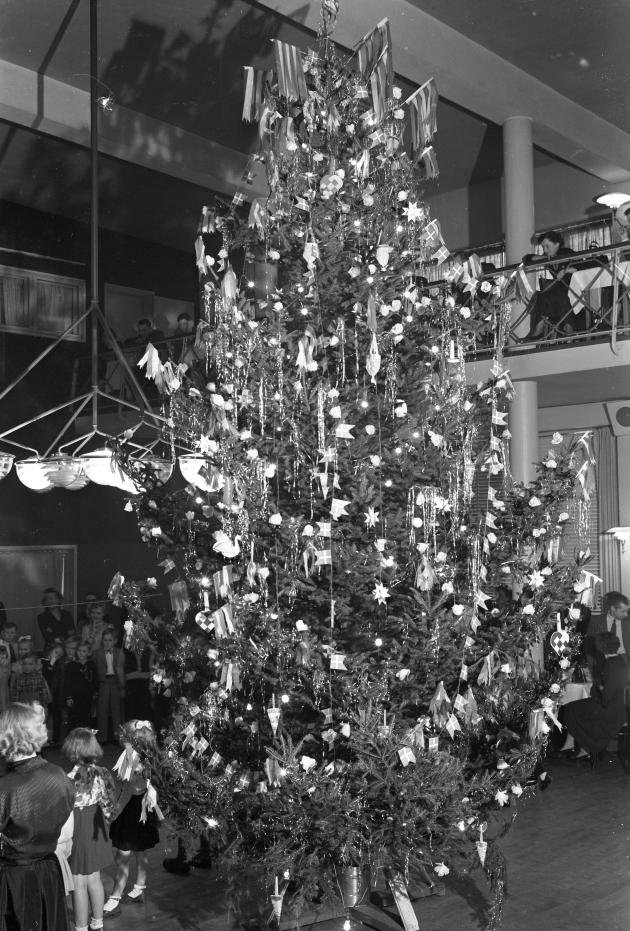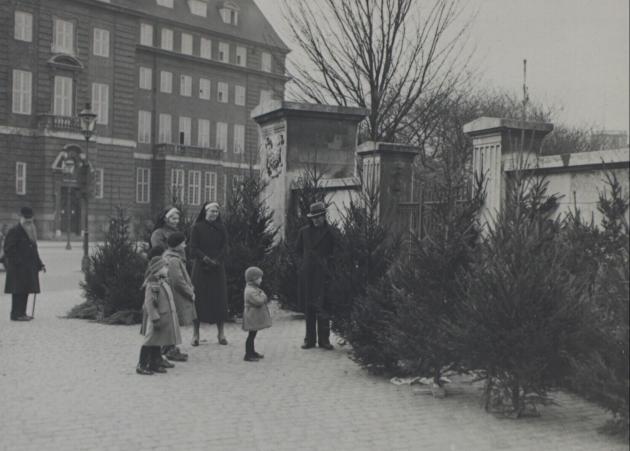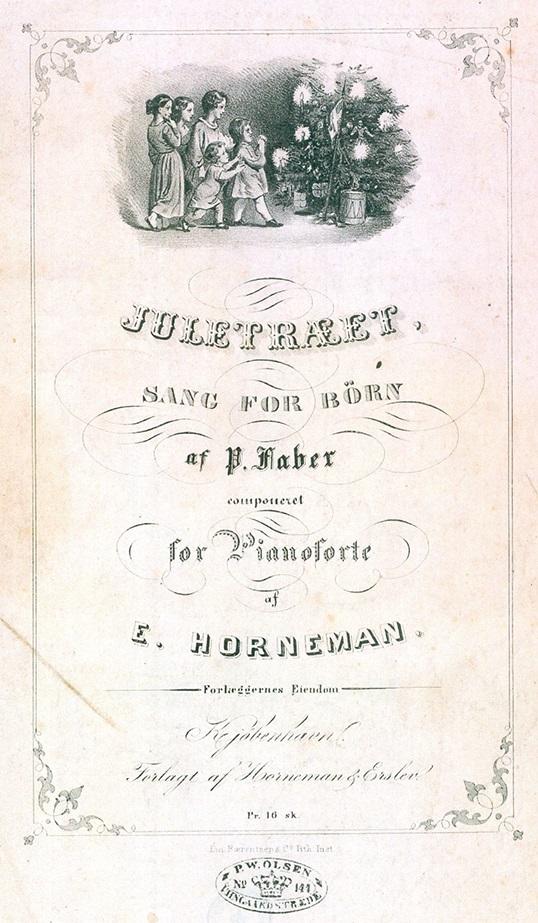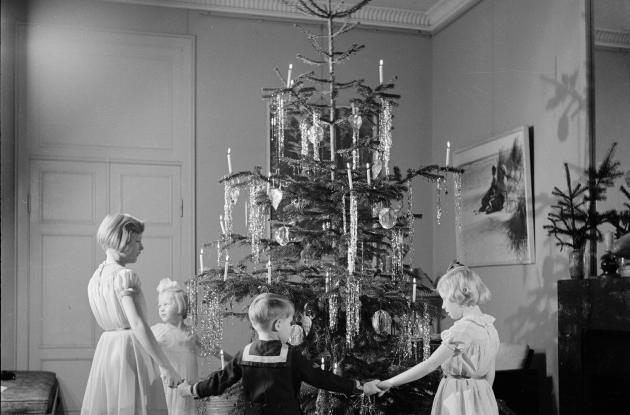A fir tree in the living room
Christmas cannot be imagined without a Christmas tree. But the Christmas tree is a relatively new tradition in Denmark. Now the Christmas tree fills our Christmas traditions, songs and stories.
Welcoming a Christmas tree inside is a relatively new tradition. In fact, it is not much more than 200 years ago that the first Christmas tree in Denmark was lit. Before the Christmas tree took over living rooms for Christmas, it was not unusual to have a fir tree in the home. In the past, spruce was used as a decoration in the winter months because, with its evergreen colour, it brought back memories of a greener time and was a symbol of eternal life.
Cultural import from Germany

Photo: Sven Türck
The tradition of cutting down a fir tree and putting it in the living room with decorations on Christmas Eve came as a cultural import from Germany. It is said that the first Christmas tree in Denmark was lit in 1808 on the Holsteinborg estate in South Zealand, where Count Frederik Adolph Holstein-Holsteinborg lived with his newly founded family. He had roots in Holstein and was educated at German universities in Kiel and Göttingen, which is probably why he brought the German tradition to the estate. Not long after, in 1811, the first Christmas with a Christmas tree in Copenhagen was celebrated at the Lehman family at Ny Kongensgade.
In the beginning, it was primarily in manor houses and in bourgeois homes that were characterised by German culture and literature that you had a Christmas tree for Christmas. Here, one might have read the German writer, scientist and philosopher Goethe's (1749-832) Die Leiden des jungen Werthers from 1774, where the Christmas tree appears. Before long, the Danish poets also adopted the Christmas tree, and in 1823 Grundtvig put the Christmas tree in a Christian context in his Kæmpe vise om julen. It probably had a great impact on the spread of the tradition in the rest of the country.
However, in the beginning Grundtvig was not a warm advocate of the Christmas tree, which was making its way into Christian Christmas traditions in Danish homes. He believed that the Christmas tree was an expression of the Enlightenment's dilution of Christianity. In the autumn of 1817 he wrote in the journal Dannevirke:
"The 18th century itself planted the Christmas tree, which now in the 19th bears its consequential fruits, and it will bear them even more bitterly if it is not uprooted".
He eventually changed his mind. Maybe because his good friend and role model B.S. Ingemann spoke warmly about the new Christmas tradition. In 1823, you could thus find a Christmas tree in Grundtvig's living room, and he wrote the aforementioned Kæmpe vise om julen at this time.

Photo: Holger Damgaard
An expensive pleasure
However, the Christmas tree was not commonplace. On the contrary. In many places, it was only at the parish rectory that you could experience the magic of the Christmas tree. That is why the parsonages often held two Christmas tree parties – one for the parish's children and one reserved for the family. Although some believed that the Christmas tree only belonged at larger events and not for the family's modest Christmas Eve, it later became more common to have a Christmas tree in the home.
Another decisive factor for the slow progress of the Christmas tree was that it was difficult to get hold of a Christmas tree, and they were not cheap. Therefore, the Christmas trees were initially reserved for those who could pay for them, and it was not until well into the 20th century that poor people in the cities got Christmas trees in their living rooms for Christmas.
Should it be eaten?
The Christmas tree carries many traditions. We decorate it with all sorts of Christmas decorations and Christmas lights, with many a star adorns the top, Christmas presents are underneath it waiting to be unwrapped, and on Christmas Eve we dance around it while singing various Christmas carols and songs.

Photo: Det Kgl. Bibliotek
A Christmas carol that is sung in many Danish homes on Christmas Eve is Højt fra træets grønne top, which was written by Peter Faber in 1847. Faber was actually director of the telegraph company, but he also had a songwriter hidden in him. He is behind several songs, such as the Christmas song Sikken trængsel og alarm. Højt fra træets grønne top depicts Christmas at the home of the Faber family, which in many ways resembles Christmas as we know it today, but also Christmas traditions from a bygone era. Some may be taken aback by the line in the first verse: First the tree must be shown, then it must be eaten
.
Neither in Faber's time nor today do you eat the bitter, prickly branches of the fir tree. The song refers to the fact that at this time the Christmas tree was decorated with all sorts of edible things. Back then, the Christmas presents were not under the tree, they sat on the branches. For example, they tied strings to apples and gingerbread and filled paper cones with raisins and dates. Towards the end of the 19th century, it began to be possible to buy ornaments and Christmas balls in glass, but this did not replace the edible Christmas decorations that can still be found on many Danes' Christmas trees today.
The edible decoration was initially also the Christmas present for the children. This is how it is also depicted in Hans Christian Andersen's fairy tale The Fir Tree from 1844. In the fairy tale, the fir tree plays the main role, which all its life has dreamed of coming inside in the warmth and being decorated. But contrary to the fir tree's expectation and to its great horror, it is plundered on Christmas Eve by the children of the house, who must harvest the year's Christmas presents hanging on the Christmas tree. Namely apples, walnuts and full paper cones.
It was not until the beginning of the 20th century that people started putting Christmas presents under the tree, and it took a long time before it gained traction with the general population.
A star on top - or what?
Today, it is tradition for a star to adorn the top of the Christmas tree. It symbolises the star above Bethlehem, which showed the holy three kings the way to the baby Jesus. But it was not always so. Over time, the top figure on the Christmas tree has also been, among other things, an angel, an elf and a spire.
The spire got its place at the top of the Christmas tree in the time around the Schleswig wars in 1848-1851 and especially after the war in 1864. Here the national romantic currents really took hold of the Danes, and this was also reflected in how the Danes decorated their Christmas tree. They began to hang drums, trumpets and Dannebrog flags on the branches of the tree and put spires on top, all of which were military and nationalist symbols. Today it is still not uncommon to see drums, trumpets or Dannebrog on the Danes' Christmas trees. In fact, Denmark is one of the only countries in the world that uses the national flag on the Christmas tree.
Read or re-read The Fir Tree
In Digital collections you can find our digitised edition of Hans Christian Andersen's Danish manuscript for the fairy tale The Fir Tree. If you can decipher Andersen's neat handwriting, you can read or re-read the fairy tale here.
